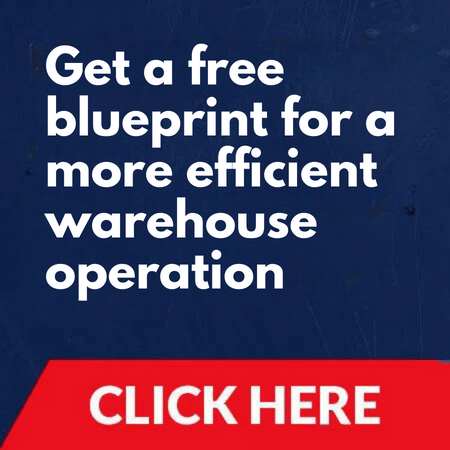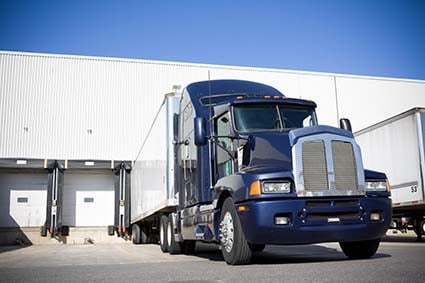How do you know whether your business can benefit from a warehouse management system? Many warehouses run quite well with warehousing functionality from order management systems or enterprise resource planning systems. So how do you decide whether you need a warehouse management system over an order management system or enterprise resource planning system?
As consultants that have assisted hundreds of companies with their systems needs, to answer these questions objectively, it’s always best to analyze the business needs in terms of functional requirements. Then find software and vendors that give the best fit for the investment for your company’s current and future needs. This article will help you sort out the information and productivity advantages that warehouse management systems generally have over order management systems and enterprise resource planning systems.
Flexible Process Options
As business become more multichannel oriented the product assortment and order profile often changes dramatically. For example today many product distributors, wholesalers, retailers and manufacturers are entering e-commerce. This has a huge impact on the warehouse because e-commerce orders are characterized by small orders, different outbound transportation carriers, higher returns, kitting of unique selections, etc. This order profile is significantly different from pallet or carton oriented units most warehouses process.
The warehouse management system functionality has to be able to provide a variety of different methods to operate different parts of the operation. It is essential to provide these different processes based on a given warehouse, the required functions, warehouse zone, product differentiation, order profile, etc. These varied requirements fall within the flexibility and capability of most warehouse management systems.
Whether it’s complexities from multiple channels or changes in other business functionality, warehouse managers are required to react to these different environments. Distribution center managers are being asked to perform multiple tasks requiring a wide variety of flexible functionality. In addition, many Third Party Logistics companies have variable requirements based on an individual client’s business model.
Having the flexibility to manage different tasks for different divisions of the business in the warehouse and apply the appropriate business rules and processes to these various segments separates most warehouse management systems from other order management system or enterprise resource planning system options.
Receiving
Receiving is where the systemic warehouse processes begin and what is able to be done effectively, efficiently and accurately in receiving sets the watermark for the rest of the warehouse functionality.
One function that allows the warehouse to better prepare for receiving goods is being able to receive Advance Shipping Notices (ASN). This functionality is usually standard in the warehouse management system. ASNs allow the receiving manager to schedule staff and be prepared for deliveries before the truck arrives at the loading dock. The ability to know the scheduled merchandise arrival dates and the merchandise that is expected will not only speed up the receiving process but also improve the flow of goods through to put away.
Many warehouse receiving functions are the place where specific item information is collected or verified to be used in the item master file for other warehouse functions. Some warehouses set restrictions that insure that certain key data or information is available and in the file before the receiving process is permitted to continue. This forced file maintenance is sometimes difficult to achieve in systems other than the warehouse management system.
Picking Options
One of the keys to efficient picking in multichannel businesses is having the option for different picking methodologies. Because you have product with different cube and sell through, you want to be able to have flexible picking options. Here are some of the picking options that are available in many warehouse management systems:
Along with the above traditional picking options, many distribution centers are adding technology to improve picking. Options such as voice picking and pick to light are being used and have been successfully interfaced or integrated with most warehouse management systems.
One very beneficial capability is the ability to preview the volume of orders in the queue to determine what orders are available to be processed, giving you the option to select just the volume or type of orders that you want to process. Most systems push orders to the warehouse in batches or dynamically, where as the warehouse management system model allows the option of the warehouse directing the order selection as needed.
Production/Assembly
In businesses that have the need for assembling kits or other production processes, there is the requirement to be able to plan and track production orders as they pass through the production process.
Most warehouse management systems have the ability to track the production tasks and manage the component inventory as well as the final assembled products. These functions can range from simple kitting to complex multi-level bills of material. If there is more complex assembly or production requirements needed, then they will often be beyond the functions of other systems. The ability to track component inventory, plan and track labor usage, and track the status of the work order status are key functionality within most warehouse management system applications today.
Inventory Management
Inventory is usually the largest asset in most companies and the desire to effectively control this asset ranks near the top of warehouse priorities. Warehouse management system applications offer advantages over most other systems performing basic inventory control for tracking inventory throughout the warehousing functions and processes – from receiving, inspection, put away, order processing, picking, shipping, returns processing, etc.
With Radio Frequency (RF) and the use of bar coded locations and product, the ability to dynamically move inventory from one location to another and the disposition of product in real time gives a more timely and accurate picture of your inventory and its components.
Most Order Management Systems and Enterprise Resource Planning Systems will support basic physical or cycle counting capabilities. However, more sophisticated cycle counting methodologies are only supported through a warehouse management system. Through the use of different events triggering cycle counts, that you control, the ability for more timely cycle counting is possible thus achieving greater inventory accuracy and less “warehouse back orders or can’t finds” with a warehouse management system.
Labor Tracking
One area where warehouse management system packages standout from order management systems/enterprise resource planning systems is in the area of labor usage and tracking. Labor often is more than 50% of the total cost per order when you consider all costs. This is key functionality to be able to capture individual and department productivity throughout the warehouse and then to be able to set productivity standards and reporting. Without the ability to measure individual’s performance there is no reliable way to give feedback on how well they are performing. With the ability to capture and measure staff’s performance and their increased awareness, this will lead to increased productivity, maybe as much as 10% to 15%. Any type of incentive pay being considered will require accurate capture and reporting of productivity.
Another labor management aspect is to be able to perform task interleaving to increase productivity by combining multiple operations within a given isle or zone. The ability to do task interleaving has obvious efficiencies and allows for better overall performance in the warehouse. This functionality is not normally found outside of warehouse management systems.
Other Warehouse Management System Modules
In many warehouse management systems there are other modular functions such as Cube Utilization, Slotting, Transportation Management, Yard Management and Material Handling modules which are options and may only be available with Warehouse Management Systems.
Summary
Don’t just assume these generalizations about the advantages of warehouse management system but determine how would they benefit your business. First, identify what additional functions will increase productivity and reduce warehouse costs. Do these functions require a warehouse management system? Secondly, identify the return on investment (ROI) and benefits which management will want to see for their investment. The results of an objective assessment will determine the benefits warehouse management system to your company.
As consultants that have assisted hundreds of companies with their systems needs, to answer these questions objectively, it’s always best to analyze the business needs in terms of functional requirements. Then find software and vendors that give the best fit for the investment for your company’s current and future needs. This article will help you sort out the information and productivity advantages that warehouse management systems generally have over order management systems and enterprise resource planning systems.
Flexible Process Options
As business become more multichannel oriented the product assortment and order profile often changes dramatically. For example today many product distributors, wholesalers, retailers and manufacturers are entering e-commerce. This has a huge impact on the warehouse because e-commerce orders are characterized by small orders, different outbound transportation carriers, higher returns, kitting of unique selections, etc. This order profile is significantly different from pallet or carton oriented units most warehouses process.
The warehouse management system functionality has to be able to provide a variety of different methods to operate different parts of the operation. It is essential to provide these different processes based on a given warehouse, the required functions, warehouse zone, product differentiation, order profile, etc. These varied requirements fall within the flexibility and capability of most warehouse management systems.
Whether it’s complexities from multiple channels or changes in other business functionality, warehouse managers are required to react to these different environments. Distribution center managers are being asked to perform multiple tasks requiring a wide variety of flexible functionality. In addition, many Third Party Logistics companies have variable requirements based on an individual client’s business model.
Having the flexibility to manage different tasks for different divisions of the business in the warehouse and apply the appropriate business rules and processes to these various segments separates most warehouse management systems from other order management system or enterprise resource planning system options.
Receiving
Receiving is where the systemic warehouse processes begin and what is able to be done effectively, efficiently and accurately in receiving sets the watermark for the rest of the warehouse functionality.
One function that allows the warehouse to better prepare for receiving goods is being able to receive Advance Shipping Notices (ASN). This functionality is usually standard in the warehouse management system. ASNs allow the receiving manager to schedule staff and be prepared for deliveries before the truck arrives at the loading dock. The ability to know the scheduled merchandise arrival dates and the merchandise that is expected will not only speed up the receiving process but also improve the flow of goods through to put away.
Many warehouse receiving functions are the place where specific item information is collected or verified to be used in the item master file for other warehouse functions. Some warehouses set restrictions that insure that certain key data or information is available and in the file before the receiving process is permitted to continue. This forced file maintenance is sometimes difficult to achieve in systems other than the warehouse management system.
Picking Options
One of the keys to efficient picking in multichannel businesses is having the option for different picking methodologies. Because you have product with different cube and sell through, you want to be able to have flexible picking options. Here are some of the picking options that are available in many warehouse management systems:
|
|
|
|
|
|
|
|
Along with the above traditional picking options, many distribution centers are adding technology to improve picking. Options such as voice picking and pick to light are being used and have been successfully interfaced or integrated with most warehouse management systems.
One very beneficial capability is the ability to preview the volume of orders in the queue to determine what orders are available to be processed, giving you the option to select just the volume or type of orders that you want to process. Most systems push orders to the warehouse in batches or dynamically, where as the warehouse management system model allows the option of the warehouse directing the order selection as needed.
Production/Assembly
In businesses that have the need for assembling kits or other production processes, there is the requirement to be able to plan and track production orders as they pass through the production process.
Most warehouse management systems have the ability to track the production tasks and manage the component inventory as well as the final assembled products. These functions can range from simple kitting to complex multi-level bills of material. If there is more complex assembly or production requirements needed, then they will often be beyond the functions of other systems. The ability to track component inventory, plan and track labor usage, and track the status of the work order status are key functionality within most warehouse management system applications today.
Inventory Management
Inventory is usually the largest asset in most companies and the desire to effectively control this asset ranks near the top of warehouse priorities. Warehouse management system applications offer advantages over most other systems performing basic inventory control for tracking inventory throughout the warehousing functions and processes – from receiving, inspection, put away, order processing, picking, shipping, returns processing, etc.
With Radio Frequency (RF) and the use of bar coded locations and product, the ability to dynamically move inventory from one location to another and the disposition of product in real time gives a more timely and accurate picture of your inventory and its components.
Most Order Management Systems and Enterprise Resource Planning Systems will support basic physical or cycle counting capabilities. However, more sophisticated cycle counting methodologies are only supported through a warehouse management system. Through the use of different events triggering cycle counts, that you control, the ability for more timely cycle counting is possible thus achieving greater inventory accuracy and less “warehouse back orders or can’t finds” with a warehouse management system.
Labor Tracking
One area where warehouse management system packages standout from order management systems/enterprise resource planning systems is in the area of labor usage and tracking. Labor often is more than 50% of the total cost per order when you consider all costs. This is key functionality to be able to capture individual and department productivity throughout the warehouse and then to be able to set productivity standards and reporting. Without the ability to measure individual’s performance there is no reliable way to give feedback on how well they are performing. With the ability to capture and measure staff’s performance and their increased awareness, this will lead to increased productivity, maybe as much as 10% to 15%. Any type of incentive pay being considered will require accurate capture and reporting of productivity.
Another labor management aspect is to be able to perform task interleaving to increase productivity by combining multiple operations within a given isle or zone. The ability to do task interleaving has obvious efficiencies and allows for better overall performance in the warehouse. This functionality is not normally found outside of warehouse management systems.
Other Warehouse Management System Modules
In many warehouse management systems there are other modular functions such as Cube Utilization, Slotting, Transportation Management, Yard Management and Material Handling modules which are options and may only be available with Warehouse Management Systems.
Summary
Don’t just assume these generalizations about the advantages of warehouse management system but determine how would they benefit your business. First, identify what additional functions will increase productivity and reduce warehouse costs. Do these functions require a warehouse management system? Secondly, identify the return on investment (ROI) and benefits which management will want to see for their investment. The results of an objective assessment will determine the benefits warehouse management system to your company.




SHARE